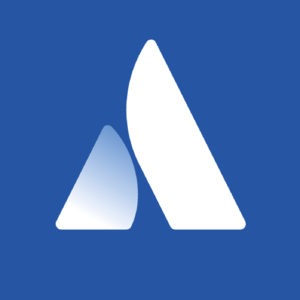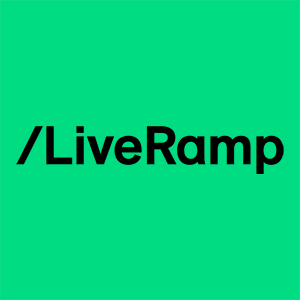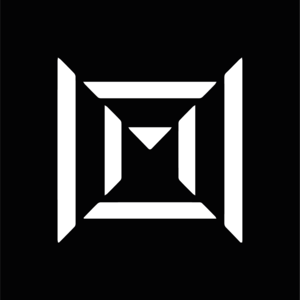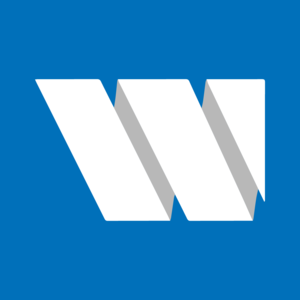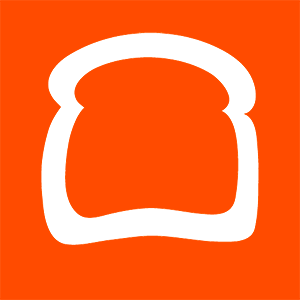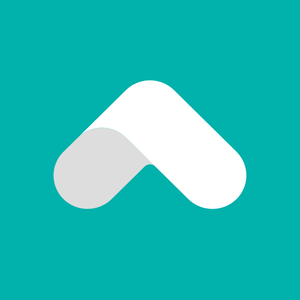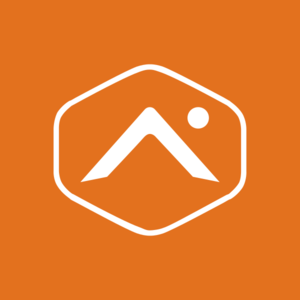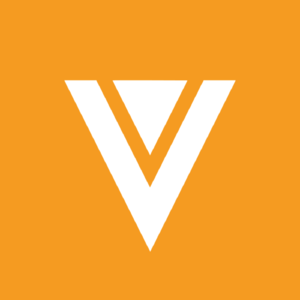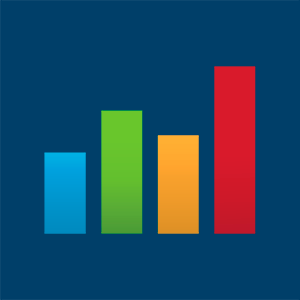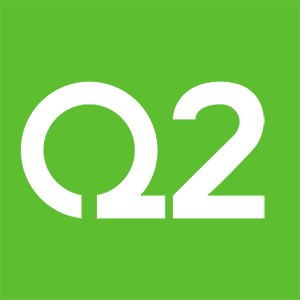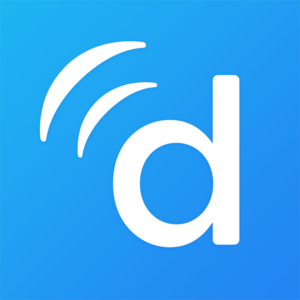
Agilysys (AGYS)
Agilysys doesn’t excite us. Its weak revenue growth and gross margin show it not only lacks demand but also decent unit economics.― StockStory Analyst Team
1. News
2. Summary
Why Agilysys Is Not Exciting
With a tech stack that powers everything from check-in to checkout at some of the world's top hospitality venues, Agilysys (NASDAQ:AGYS) develops and provides cloud-based and on-premise software solutions for hotels, resorts, casinos, and restaurants to manage operations and enhance guest experiences.
- Gross margin of 61.8% reflects its relatively high servicing costs
- Operating profits and efficiency rose over the last year as it benefited from some fixed cost leverage
- The good news is that its software platform has product-market fit given the rapid recovery of its customer acquisition costs


Agilysys doesn’t measure up to our expectations. You should search for better opportunities.
Why There Are Better Opportunities Than Agilysys
High Quality
Investable
Underperform
Why There Are Better Opportunities Than Agilysys
Agilysys is trading at $126.04 per share, or 10.6x forward price-to-sales. Not only is Agilysys’s multiple richer than most software peers, but it’s also expensive for its revenue characteristics.
There are stocks out there featuring similar valuation multiples with better fundamentals. We prefer to invest in those.
3. Agilysys (AGYS) Research Report: Q3 CY2025 Update
Hospitality software provider Agilysys (NASDAQ:AGYS) beat Wall Street’s revenue expectations in Q3 CY2025, with sales up 16.1% year on year to $79.3 million. The company’s full-year revenue guidance of $316.5 million at the midpoint came in 1.8% above analysts’ estimates. Its non-GAAP profit of $0.40 per share was 4.3% above analysts’ consensus estimates.
Agilysys (AGYS) Q3 CY2025 Highlights:
- Revenue: $79.3 million vs analyst estimates of $76.94 million (16.1% year-on-year growth, 3.1% beat)
- Adjusted EPS: $0.40 vs analyst estimates of $0.38 (4.3% beat)
- Adjusted EBITDA: $16.36 million vs analyst estimates of $14.94 million (20.6% margin, 9.5% beat)
- The company lifted its revenue guidance for the full year to $316.5 million at the midpoint from $310 million, a 2.1% increase
- Operating Margin: 17.8%, up from 6% in the same quarter last year
- Free Cash Flow was $15 million, up from -$4.98 million in the previous quarter
- Market Capitalization: $3.25 billion
Company Overview
With a tech stack that powers everything from check-in to checkout at some of the world's top hospitality venues, Agilysys (NASDAQ:AGYS) develops and provides cloud-based and on-premise software solutions for hotels, resorts, casinos, and restaurants to manage operations and enhance guest experiences.
Agilysys offers three integrated ecosystems of hospitality software: Property Management Systems (PMS), Point-of-Sale (POS), and Inventory & Procurement solutions. The company's comprehensive suite includes over 20 specialized applications that handle various aspects of hospitality operations, from managing room bookings and guest profiles to processing food orders and tracking inventory.
The company's customers use these systems to streamline their operations, increase revenue, and create personalized experiences for guests. For example, a resort might use Agilysys Stay PMS to manage room bookings and guest profiles, InfoGenesis POS for restaurant orders, and IG OnDemand to allow guests to order food from their mobile devices anywhere on the property. These integrated solutions help properties create a seamless experience while gathering valuable guest data for personalization and marketing.
Agilysys generates revenue through software licensing, subscription services, hardware sales, and professional services. The company has been shifting its business model toward recurring subscription and maintenance revenue, which provides more stable income than one-time product sales. This strategic focus on Software-as-a-Service (SaaS) has been driving its growth as the hospitality industry increasingly embraces cloud technology.
Operating across North America, Europe, the Middle East, Asia-Pacific, and India, Agilysys serves diverse clients ranging from luxury resorts and casino operators to universities, corporate foodservice, and healthcare facilities seeking to modernize their hospitality offerings.
4. Hospitality & Restaurant Software
Enterprise resource planning (ERP) and customer relationship management (CRM) are two of the largest software categories dominated by the likes of Microsoft, Oracle, and Salesforce.com. Today, the secular trend of mass customization is driving vertical software that customizes ERP and CRM functions for specific industry requirements. Restaurants are a prime example where a set of customized software providers have sprung up in recent years to create unique operating systems that blend tax and accounting software, order management and delivery, along with supply chain management. Hotels and other hospitality providers are another example.
Agilysys competes with larger enterprise software providers like Oracle Corp., Shiji Group, Amadeus IT Group, and Infor that offer bundled hospitality solutions. The company also faces competition from smaller specialized software providers like Maestro PMS and from custom in-house systems developed by large hotel chains.
5. Revenue Growth
Reviewing a company’s long-term sales performance reveals insights into its quality. Any business can put up a good quarter or two, but many enduring ones grow for years. Over the last five years, Agilysys grew its sales at a 15.5% compounded annual growth rate. Although this growth is acceptable on an absolute basis, it fell slightly short of our standards for the software sector, which enjoys a number of secular tailwinds.
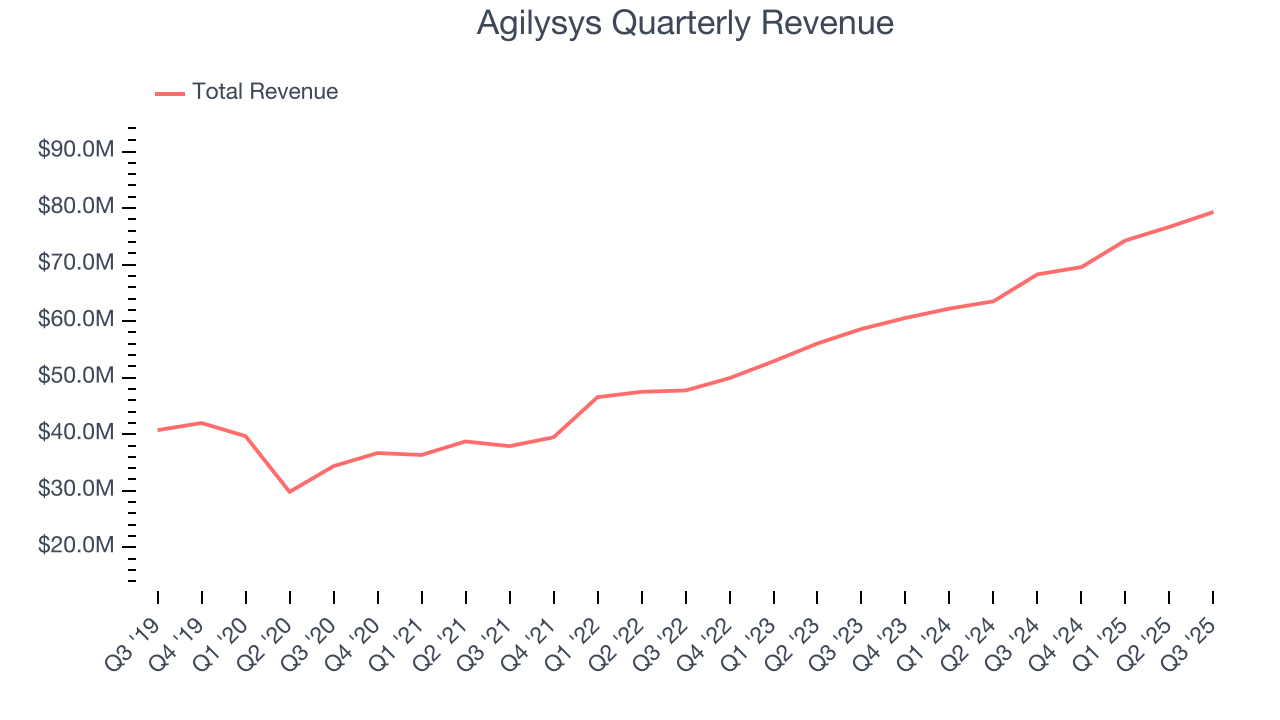
Long-term growth is the most important, but within software, a half-decade historical view may miss new innovations or demand cycles. Agilysys’s annualized revenue growth of 17.4% over the last two years is above its five-year trend, suggesting its demand recently accelerated. 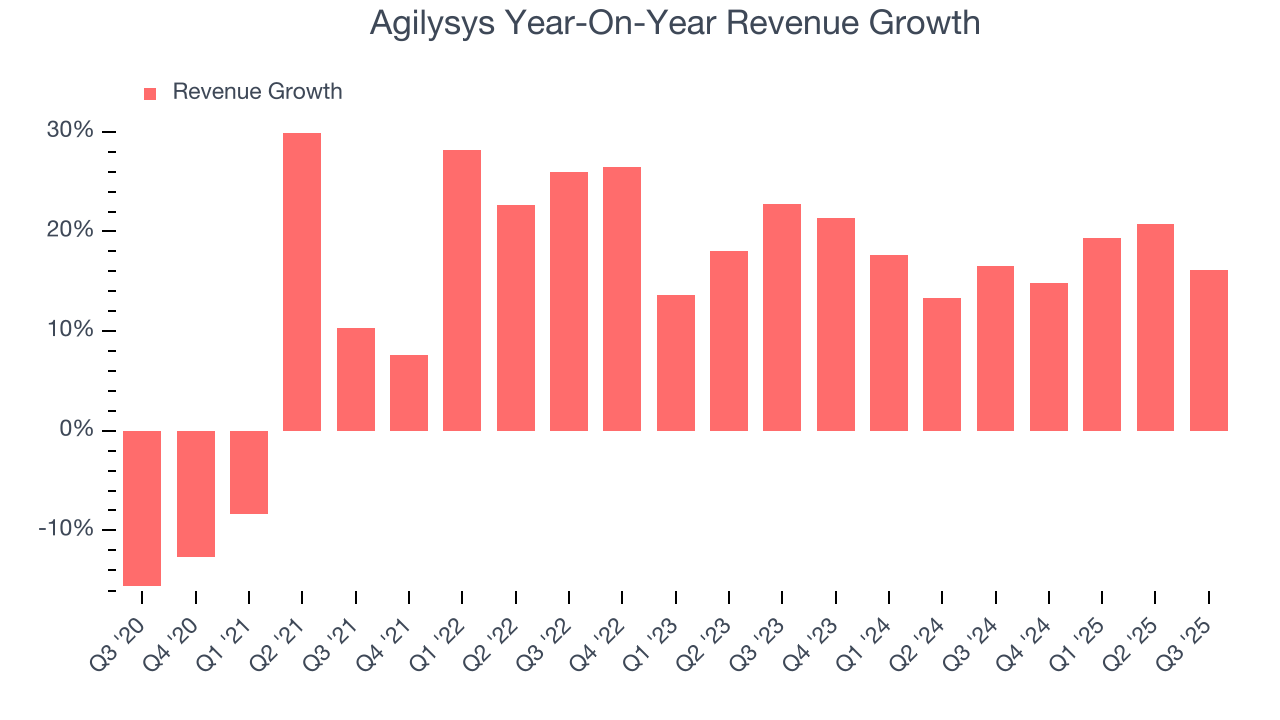
This quarter, Agilysys reported year-on-year revenue growth of 16.1%, and its $79.3 million of revenue exceeded Wall Street’s estimates by 3.1%.
Looking ahead, sell-side analysts expect revenue to grow 11.5% over the next 12 months, a deceleration versus the last two years. This projection doesn't excite us and implies its products and services will see some demand headwinds.
6. Customer Acquisition Efficiency
The customer acquisition cost (CAC) payback period measures the months a company needs to recoup the money spent on acquiring a new customer. This metric helps assess how quickly a business can break even on its sales and marketing investments.
Agilysys is extremely efficient at acquiring new customers, and its CAC payback period checked in at 20.2 months this quarter. The company’s rapid recovery of its customer acquisition costs indicates it has a highly differentiated product offering and a strong brand reputation. These dynamics give Agilysys more resources to pursue new product initiatives while maintaining the flexibility to increase its sales and marketing investments.
7. Gross Margin & Pricing Power
For software companies like Agilysys, gross profit tells us how much money remains after paying for the base cost of products and services (typically servers, licenses, and certain personnel). These costs are usually low as a percentage of revenue, explaining why software is more lucrative than other sectors.
Agilysys’s gross margin is substantially worse than most software businesses, signaling it has relatively high infrastructure costs compared to asset-lite businesses like ServiceNow. As you can see below, it averaged a 61.8% gross margin over the last year. Said differently, Agilysys had to pay a chunky $38.24 to its service providers for every $100 in revenue.
The market not only cares about gross margin levels but also how they change over time because expansion creates firepower for profitability and free cash generation. Agilysys has seen gross margins improve by 1.5 percentage points over the last 2 year, which is solid in the software space.
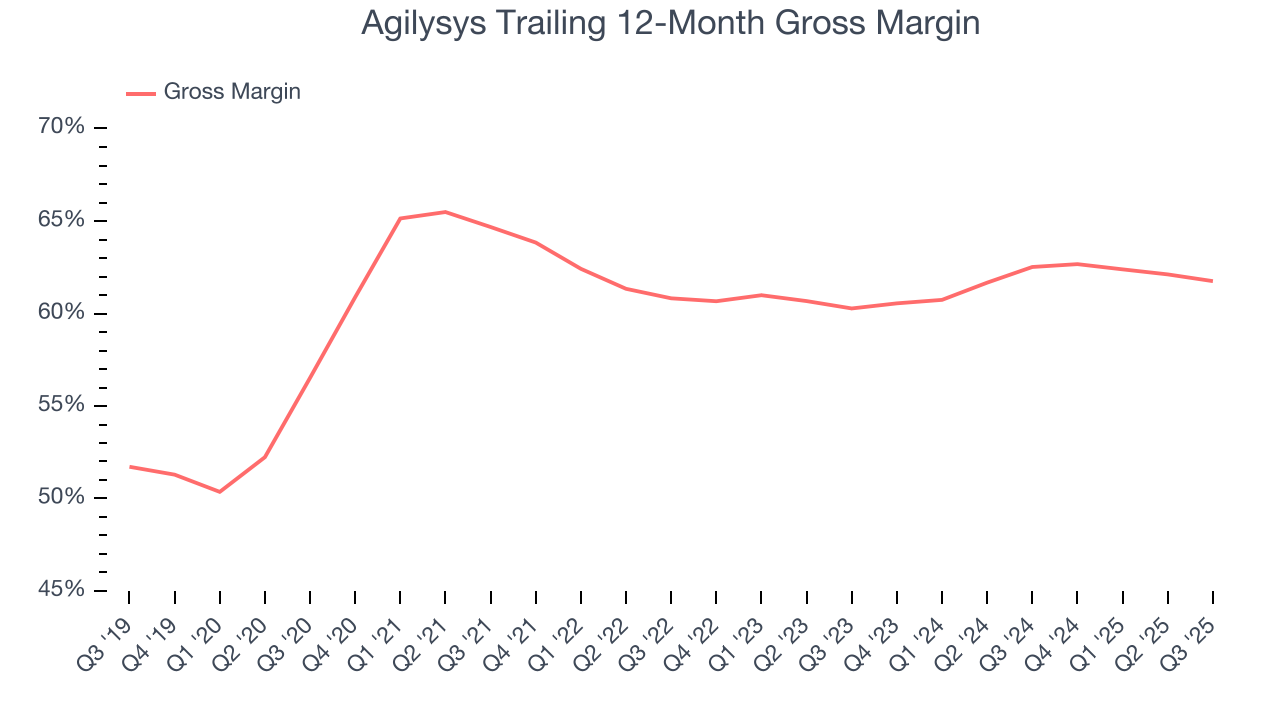
Agilysys’s gross profit margin came in at 61.7% this quarter, down 1.5 percentage points year on year. Zooming out, the company’s full-year margin has remained steady over the past 12 months, suggesting its input costs have been stable and it isn’t under pressure to lower prices.
8. Operating Margin
Agilysys has been an efficient company over the last year. It was one of the more profitable businesses in the software sector, boasting an average operating margin of 10.5%. This result was particularly impressive because of its low gross margin, which is mostly a factor of what it sells and takes huge shifts to move meaningfully. Companies have more control over their operating margins, and it’s a show of well-managed operations if they’re high when gross margins are low.
Looking at the trend in its profitability, Agilysys’s operating margin rose by 2.2 percentage points over the last two years, as its sales growth gave it operating leverage.
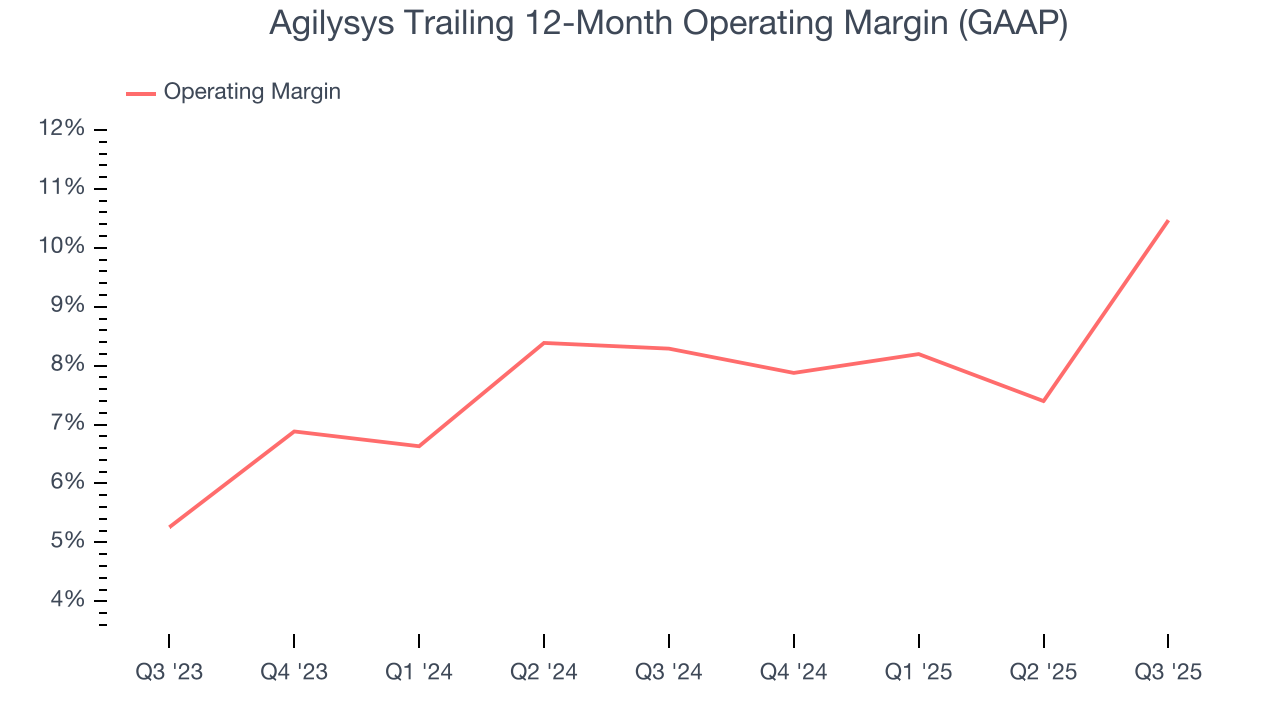
This quarter, Agilysys generated an operating margin profit margin of 17.8%, up 11.8 percentage points year on year. The increase was solid, and because its gross margin actually decreased, we can assume it was more efficient because its operating expenses like marketing, R&D, and administrative overhead grew slower than its revenue.
9. Cash Is King
Free cash flow isn't a prominently featured metric in company financials and earnings releases, but we think it's telling because it accounts for all operating and capital expenses, making it tough to manipulate. Cash is king.
Agilysys has shown decent cash profitability, giving it some flexibility to reinvest or return capital to investors. The company’s free cash flow margin averaged 18.7% over the last year, slightly better than the broader software sector.
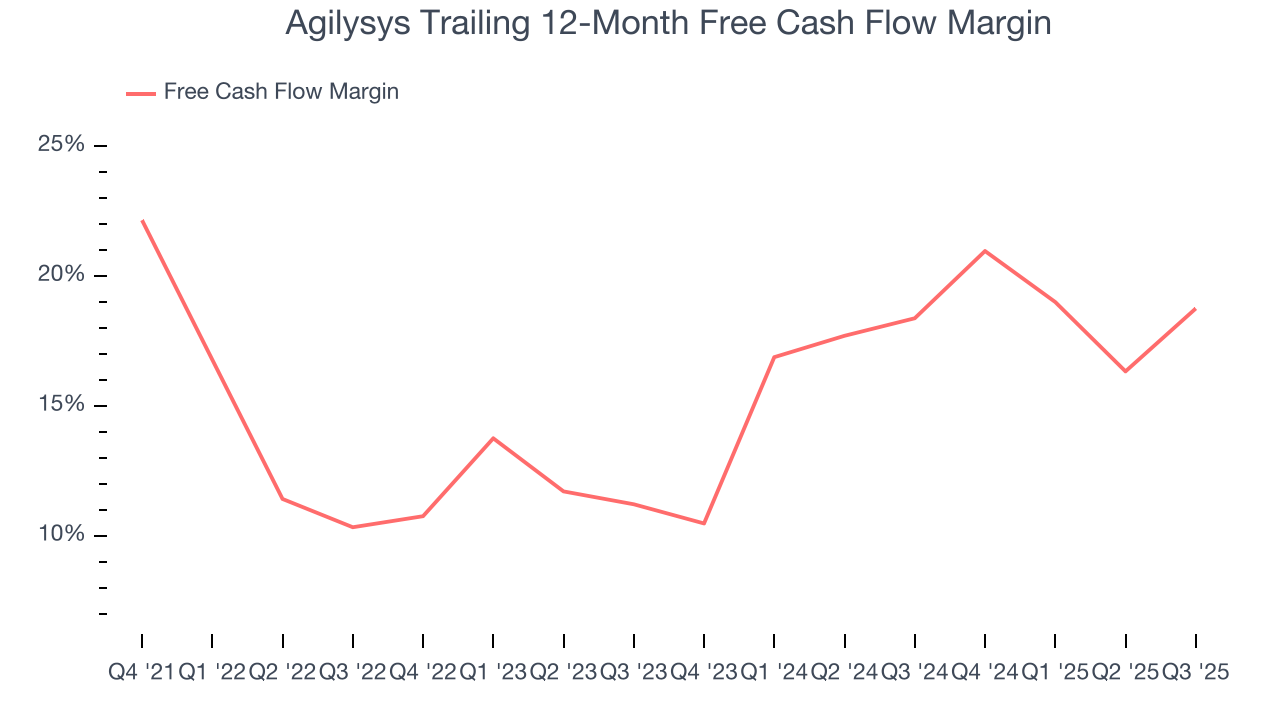
Agilysys’s free cash flow clocked in at $15 million in Q3, equivalent to a 18.9% margin. This result was good as its margin was 10.2 percentage points higher than in the same quarter last year, but we wouldn’t read too much into the short term because investment needs can be seasonal, causing temporary swings. Long-term trends trump fluctuations.
Over the next year, analysts predict Agilysys’s cash conversion will slightly fall. Their consensus estimates imply its free cash flow margin of 18.7% for the last 12 months will decrease to 17.7%.
10. Balance Sheet Assessment
Businesses that maintain a cash surplus face reduced bankruptcy risk.
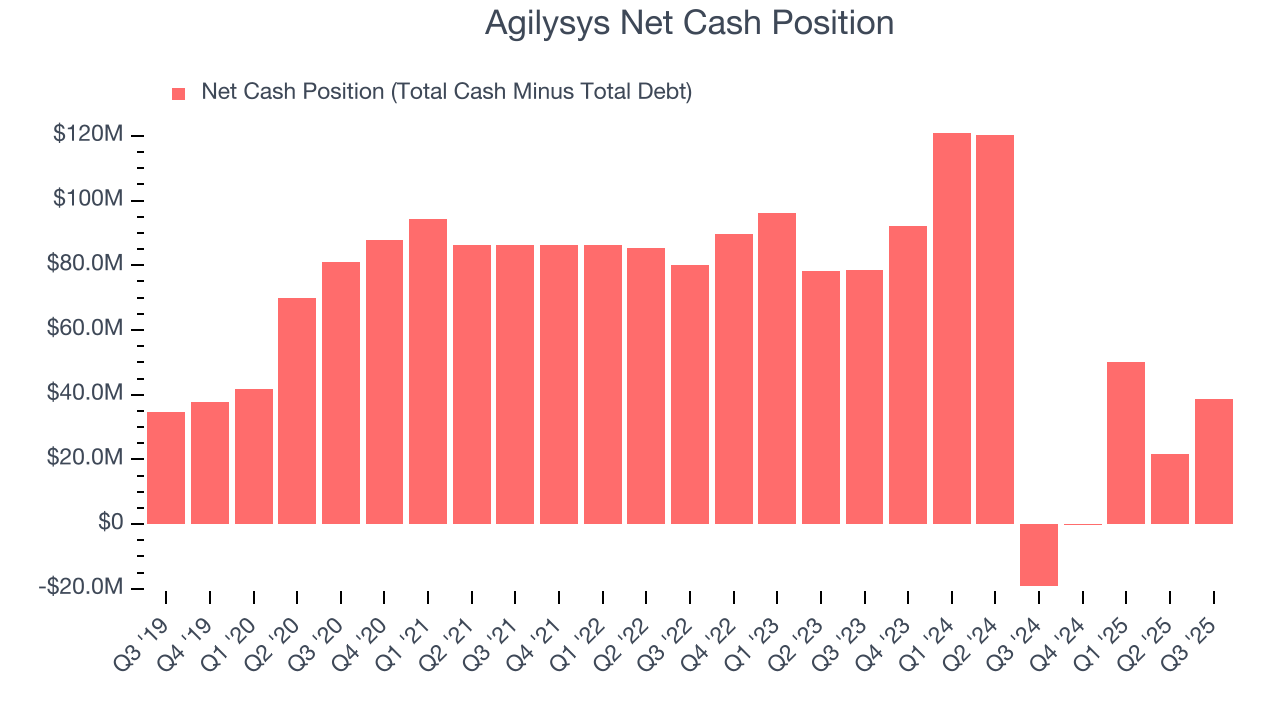
Agilysys is a profitable, well-capitalized company with $59.34 million of cash and $20.64 million of debt on its balance sheet. This $38.69 million net cash position gives it the freedom to borrow money, return capital to shareholders, or invest in growth initiatives. Leverage is not an issue here.
11. Key Takeaways from Agilysys’s Q3 Results
We were impressed by how significantly Agilysys blew past analysts’ EBITDA expectations this quarter. We were also glad its full-year revenue guidance exceeded Wall Street’s estimates. Zooming out, we think this was a solid print. The stock traded up 5.3% to $121 immediately after reporting.
12. Is Now The Time To Buy Agilysys?
Updated: December 7, 2025 at 9:35 PM EST
The latest quarterly earnings matters, sure, but we actually think longer-term fundamentals and valuation matter more. Investors should consider all these pieces before deciding whether or not to invest in Agilysys.
When it comes to Agilysys’s business quality, there are some positives, but it ultimately falls short. Although its revenue growth was a little slower over the last five years and analysts expect growth to slow over the next 12 months, its efficient sales strategy allows it to target and onboard new users at scale. Investors should tread carefully with this one, however, as Agilysys’s gross margins show its business model is much less lucrative than other companies.
Agilysys’s price-to-sales ratio based on the next 12 months is 10.6x. While this valuation is fair, the upside isn’t great compared to the potential downside. We're fairly confident there are better investments elsewhere.
Wall Street analysts have a consensus one-year price target of $142 on the company (compared to the current share price of $126.04).
